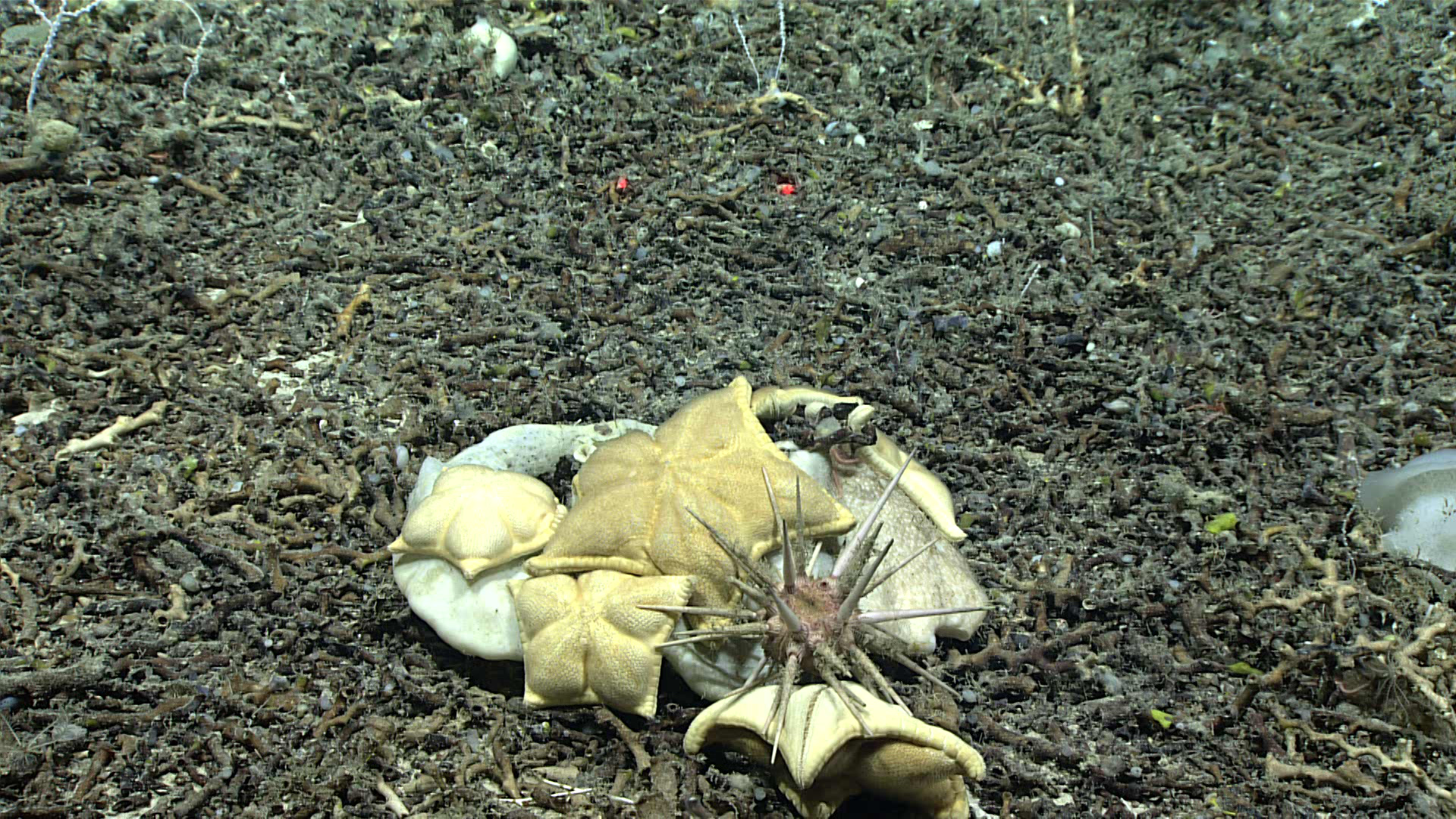
The newly minted internet star is a starfish that looks like an Italian dinner dish.
The “ravioli” starfish, also dubbed online a “cookie” starfish, was the species most frequently found during a recent National Oceanic and Atmospheric Administration (NOAA) dive into the Atlantic Ocean off the southeast coast of the U.S. The Plinthaster dentatus, as it’s formally called, is of course not edible.
While it may be strange to see this shape of starfish, it’s a pretty normal sea creature, according to Chris Mah, an invertebrate zoology research associate at the Smithsonian National Museum of Natural History.
But why do they look like ravioli? Well, as Lady Gaga croons, this species of starfish resembles the doughy pasta dumpling just because it was “born this way.”
“Sea stars have a skeleton like we do, in the sense that the inside of their body — their entire body structure — is basically a three-dimensional puzzle,” Mah says. All relatives of sea stars appear similar — flattened with multiple arms that “radiate away from the mouth” — and some look more like Patrick Star from Spongebob than others, like this one.
Though the creature was discovered in 1884, according to the NOAA, its biology has been a bit mysterious. With the NOAA’s Okeanos Explorer ship sending robotic vessels into the water to film for research purposes, biologists like Mah can finally learn what the “ravioli” starfish does all day — and what it eats for dinner.
The footage of this pasta-looking echinoderm is actually pretty exciting because of a connection to food: Scientists got a first look at the creature eating. “What was remarkable was that you have several different species and genera of ravioli stars feeding on the sponge, not once, but twice,” Mah tells TIME.
It’s easy to know what animals like lions and tigers eat in a day, Mah explains, but it’s harder to analyze the “natural habitat” of these creatures. When it comes to animals in the deep, dark sea, it takes expeditions like these to literally illuminate what’s going on down there. “This probably happens all the time, but there’s no way to tell how often it happens or even if it happens,” Mah says, regarding what kind of feeding goes on with these starfish. “We assume it does, but to actually see it was momentous.”

If you think that sea star looks funny, you’re not alone. “[Ravioli starfish] are really bizarre looking,” Mah says. “The weirdness is what makes them so interesting.”
It’s certainly a big month in starfish news. The last viral creature to make waves with its shapely physique was called “thicc” on Twitter. But, just like this “ravioli” starfish, it really wasn’t as it appeared. “It is totally not a butt,” Mah explained to TIME in a previous interview. “The swollen areas, even though people kind of interpret two of those areas as buttocks, there are five of them. And all five of them are the regions where all of the animal’s guts are located,” he said.
But we see what we want to see, don’t we? People tend to have “bizarre” interpretations of animal shapes based on their appearance, Mah says — especially in the case of starfish, which people don’t know much about. “These starfish — they either look like cookies or raviolis — and either one would be an appropriate common name, I suppose. But up until a couple of years ago, those animals didn’t have common names,” Mah says, explaining the internet’s rising interest in marine biology. “They were all known only to scientists.”
More Must-Reads from TIME
- Cybersecurity Experts Are Sounding the Alarm on DOGE
- Meet the 2025 Women of the Year
- The Harsh Truth About Disability Inclusion
- Why Do More Young Adults Have Cancer?
- Colman Domingo Leads With Radical Love
- How to Get Better at Doing Things Alone
- Michelle Zauner Stares Down the Darkness
Write to Rachel E. Greenspan at rachel.greenspan@time.com